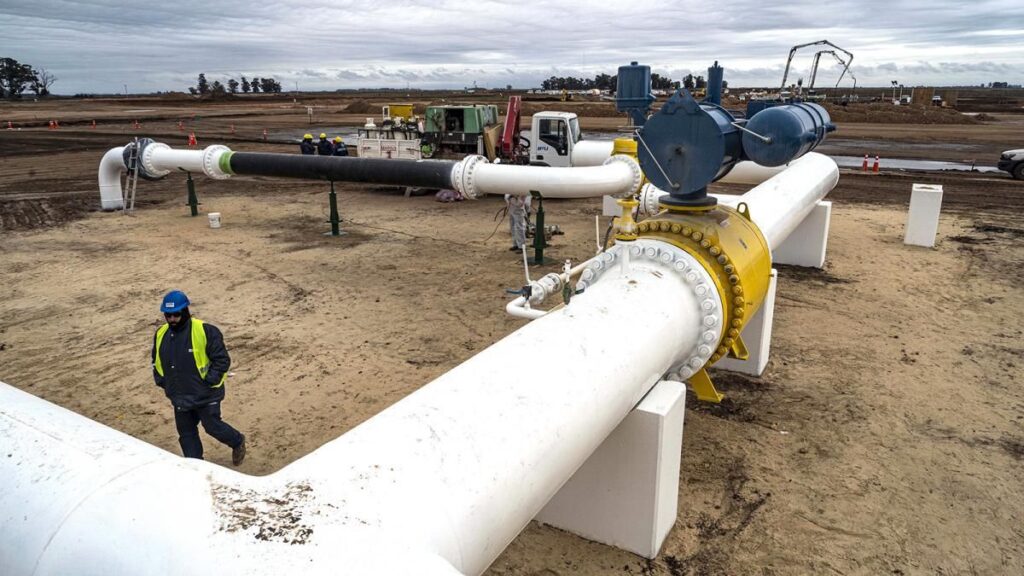
Argentina is emerging as a rising natural gas powerhouse with a combination of geological fortune, growing infrastructure, and strategic shift towards cleaner energy alternatives. Natural gas is shaping the transition by stabilizing the grid through high-tech shale extraction. The continued investment in infrastructure and responsible environmental policies aids in positioning the country as a model for clean energy evolution. Argentina’s energy mix relies on natural gas for over 55% of electricity generation, reducing reliance on dirtier fuels. It also plays a role in bridging Argentina’s transition from high-emission sources to renewables. Natural gas produces lower emissions compared to coal or diesel. Additionally, it supports grid stability by providing reliable baseload energy while wind and solar ramp up. Argentina is investing in liquefaction terminals to export LNG to Europe and Asia. Pin-type insulators ensure a safe and reliable electricity supply to drilling rigs, pumping stations, and control systems.
Pin-type insulators function in medium-voltage power lines supplying electricity to drilling rigs, pumping stations, and gas processing plants. They support overhead power lines on utility poles in remote gas fields. Also, they prevent electrical leakage by isolating live conductors from grounded structures. Pin-type insulators are durable and have insulation properties that help maintain uninterrupted operations. This is crucial to reduce downtime in critical gas production activities. Argentina extracts natural gas through hydraulic fracturing, which helps maximize yield. Operators like YPF, Chevron, and Shell are leading the charge, drilling hundreds of wells annually. Natural gas and renewables can work together to create a more reliable and affordable energy system in Argentina.
Expanding natural gas production in Argentina using pin-type insulators
High-quality pin-type insulators support the entire energy value chain, including natural gas exploration, processing, and transport. Pin-type insulators serve in overhead transmission and distribution lines to support the conductor on a utility pole, insulate the conductor from the pole, and withstand high mechanical loads. Natural gas production in Vaca Muerta depends on consistent, high-capacity electrical power for drilling rigs, gas compressors, separation and treatment, and monitoring systems. Here are the functions of pin-type insulators in expanding natural gas production in Argentina.

- Enabling power delivery to remote fields—natural gas in Neuquén and Patagonia may lack permanent power infrastructure. Pin-type insulators allow for quick deployment of temporary power lines and reduce maintenance needs due to their durability.
- Supporting infrastructure scalability—pin-type insulators are modular and cost-effective for easier extension of power grids. They are suitable for both low- and medium-voltage lines, ideal for industrial zones and rural stations.
- Minimizing power loss and downtime—reliable insulators reduce the risk of short circuits, power failures, and downtime.
- Integration with smart grids—modern natural gas facilities are integrating smart grid technologies for monitoring and efficiency. Pin-type insulators help maintain grid stability in regions with fluctuating energy demand.
Integrating natural gas with Argentina’s renewable energy sources
Despite providing a balance in the electricity provision in Argentina, natural gas produces greenhouse gas emissions. The country has committed under the Paris Agreement to reduce emissions and increase the share of renewables. Renewables can work with natural gas to create a more reliable, affordable, and sustainable energy system. This could help build a grid that’s cleaner, more resilient, and ready for the future. Natural gas supports renewables by providing grid stability, backup power, and lower emissions. Many gas-powered plants are under modification to work in conjunction with hybrid solar or wind farms. Pin-type insulators reduce the risks of short circuits, power failures, and downtime. The following are the roles of natural gas as a bridge fuel to clean energy.

- Investments in renewables—the government has attracted investments in renewable infrastructure. It has plenty of renewable energy resources, including wind energy, solar energy, and hydropower.
- Hybrid energy systems—Argentina is witnessing the benefits of integrating gas with renewables. These projects include combined-cycle plants, solar and gas hybrid projects, and microgrids powered by solar.
- Infrastructure development—natural gas and renewables projects will improve access to gas in remote regions, support cleaner energy in areas, and provide potential for green hydrogen development.
- Clean energy goals—Argentina is positioning natural gas as a partner in the clean energy transition. This is through strategies such as gas supporting renewables, green hydrogen, battery storage, and biogas to replace the fuels. These strategies help reduce emissions and stabilize the electrical grid.